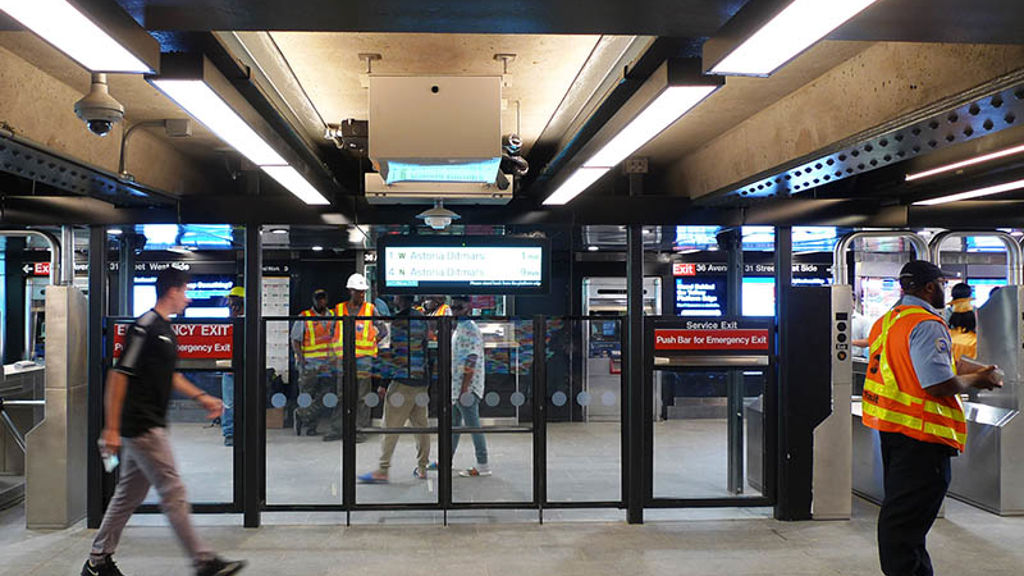Great Britain’s digital energy system: creating the world’s first ecosystem of connected digital twins
Virtual Energy System Programme

What we delivered
-
Guided Great Britain’s electricity system operator in developing a Virtual Energy System: unifying the physical and digital elements of the country’s energy system
-
Identified 14 key socio-technical elements required to realise this new system, including governance, security, and skills
-
We defined the technical architecture, potential delivery routes, security needs, and key enablers of a data sharing infrastructure, central to the Virtual Energy System Programme vision
Get in touch with our team
NESO, Great Britain’s national energy system operator, is responsible for balancing the supply and demand of electricity across the high-voltage transmission network. Like other grid operators across the world, NESO has identified the structural and operational challenges presented by the transition to a net-zero energy system (and a 2030 deadline).
Existing methods of balancing supply and demand are going to struggle with the increase in renewables and distributed energy resources (DERs). Today’s UK energy system lacks end-to-end digital management capability – being a patchwork of legacy systems, technology layers, supplier complexity and incompatible standards.
To address this, NESO is spearheading the sector-wide Virtual Energy System to promote data exchange, data-driven decisions, whole-system monitoring, enabling operational optimisations, while ensuring an efficient and reliable energy system fit for the future.
Since 2021, in collaboration with the Energy Systems Catapult and Icebreaker One, Arup have supported the programme through research, design, and development, and strategic programme direction and programme management.
Arup is helping NESO to create the world’s first digital replica of a nation’s energy network – in essence, developing a real-time digital model of the UK’s entire physical system.
A framework for a digitalised energy system
Our work began at the organisational level, focusing on a framework that could power this large-scale transformation. Through research, expert interviews, and extensive industry-wide engagements, we developed a ‘common framework’, identifying 14 key socio-technical factors, across people, processes, data and technology that will be crucial to realise NESO’s Virtual Energy System. The result is a pathway to collaboratively develop the governance, data standards, access policies, security, skills, and wider support required to efficiently deliver the range of use cases that comprise a working Virtual Energy System.
It was also clear from this work that the day-to-day operational insights and future planning the system depend on – such as the location and change of supply and demand – will increasingly rely on a common, industry-wide data sharing infrastructure (a concept that was informed by the Digital Spine Feasibility Study, a project sponsored by DESNZ).
Paving the way for a net-zero energy future
In future the energy system will need to integrate large volumes of low-carbon and renewable energy, adding further complexity to the grid in terms of assets, interactions, management of supply, and other operations. The digitalisation and integration of these distributed energy resources (DERs) will fundamentally change how NESO must work, with implications for the sector as a whole.
The Virtual Energy System Programme is a response to this changing energy mix, ensuring NESO can operate a safe, reliable and affordable electricity system, all while supporting the transition to a greener, and more efficient system for future generations.
Data standards
From network models to consumer usage patterns, the energy sector grapples with a substantial and growing volume of data across operations, maintenance, research, business, and other domains. This complex network of systems all exchange and share data in their own preferred standards. As this data sourcing and complexity grows, it will get harder for the energy system to interpret and yield the necessary operational insights. Common standards, that enable interoperability of systems and services, are a pressing priority.
To address this challenge, Arup defined the sector-wide data needs and the requirements to facilitate interoperability both within and across sectors.
Designing the solution architecture
The need for a data sharing infrastructure was clear, but achieving it is a complex task. Our approach was to first develop a conceptual technical architecture. This architecture brought the concept to life by illustrating the user journey, key components, their interactions, and how they would support the identified use cases and future use cases.
This part of the programme built on our previous work on the Digital Spine Feasibility Study, a project sponsored by the UK’s Department for Energy Security and Net Zero.
Listening to industry partners
The transition to a digital energy system represents a major shift for the energy industry. As such, we were keen to embrace a user-centred and inclusive approach as we helped to progress development of the Virtual Energy System. This is critical if innovative technologies and unfamiliar ways of working, central to such a new system, are to be supported and adopted by industry partners, at the pace required.
The incentives for change need to be clear and understood. So, we engaged with stakeholders across the energy sector to define high-value use cases and address critical challenges, resulting in the creation of a ‘common framework.’
We gained lots of valuable feedback from industry players, which in turn strengthened and refined NESO’s vision for the Virtual Energy System Vision, making it a shared, industry-wide priority. The use cases we have jointly identified will now serve as a foundation for the system’s initial iterations, with further contributions from the sector leading to a vibrant ecosystem of interconnected digital twins.
Carolina Tortora
Head of Innovation, National Energy System Operator (NESO)
Projects
Explore more digital projects

Creating cool and green streets with spatial data
Strategic Prioritisation Map for Water Sensitive Urban Design, Australia

Auckland’s first urban heat assessment guides climate adaptation planning
Auckland Urban Heat Assessment, New Zealand

An ambitious station modernization program for New York’s subway system
MTA Enhanced Station Initiative, United States of America

Using geospatial and water expertise to inform onsite wastewater treatment system planning
Sonoma County Onsite Wastewater Treatment System Mapping & Analysis Study, United States of America
Get in touch with us
If you'd like to speak to one of our digital experts about any of the issues raised on this page or a potential collaboration then please get in touch by completing the form.



